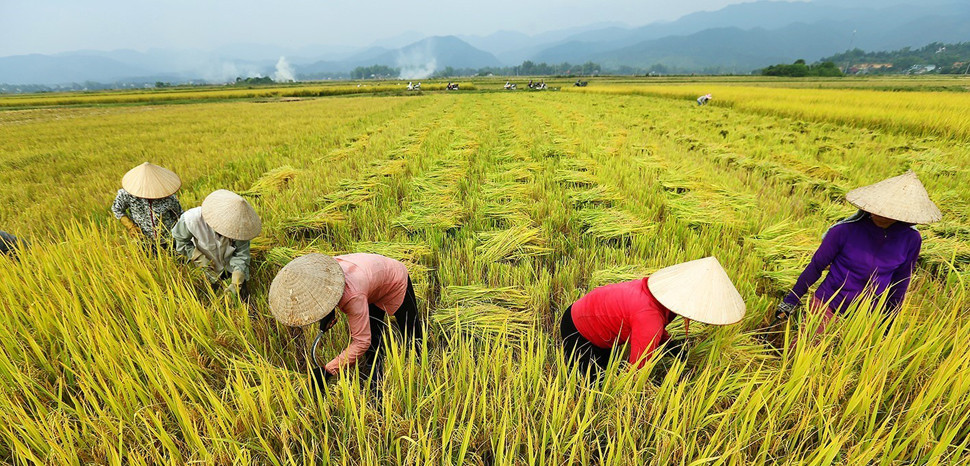Vietnamese farmers mostly bury straw after harvesting, a habit that not only leads to a loss of revenue but also an increase in CO2 emissions.
With 7.1 million hectares of growing area, farmers harvest 41-43 million tons of rice a year, most of which is consumed domestically, while 7-8 million tons are for export.
While Vietnam takes pride in the huge volume of rice it can produce, it understands that rice farming creates the highest volume of CO2 emissions in agricultural production. Rice production generates 39.1 percent of the total 90 million tons of CO2 emissions each year.
Tran Minh Hai, Vice Rector of the School of Public Policy and Agricultural Development, said fertilizers, pesticides, irrigation water, and straw are the sources of emissions in rice cultivation.
Straw burning causes the soil to lose nutrients, weakens biodiversity, and pollutes the environment.

The Mekong River Delta is the biggest rice granary in Vietnam, which generates 24 million tons of straw each year. Of this, only 30 percent, or 7 million tons, is collected, while the remaining 17 million tons are burnt or buried in the fields.
Hai pointed out that this habit causes a huge waste of rice by-products, pollutes the environment, and increases greenhouse gas emissions.
The Ministry of Agriculture and Rural Development (MARD) is working with localities on a pilot program of 1 million hectares of specialized high-quality low-emission rice fields.
Under the plan, farmers reduce the use of fertilizers and pesticides; use alternate wet and dry irrigation; take straw away from fields, or treat straw to reduce methane and other gas emissions.
The new farming model has brought encouraging results. The number of rice seeds used has decreased from 140 kilograms to 60 kilograms per hectare. The amount of fertilizer use has dropped from 3-4 times to 2 times a crop, and the volume of inorganic fertilizer has fallen at least 20 percent. Epidemics and post-harvesting losses have also decreased.
Instead of burning straw or burying it in soil, farmers can sell the straw for VND 400,000 per hectare. This helps reduce contamination and increases farmers’ incomes.
The pilot model has cut 2-6 tons of CO2e per hectare compared with control fields.
A report showed that farmers earn VND86 million per hectare from traditional farming, but their income would be VND133 million if they took full advantage of straw to grow mushrooms and create organic fertilizer.
Source: Rice News Today





